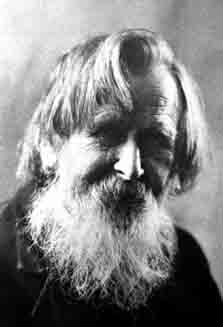| This article needs additional citations for verification. Please help improve this article by adding citations to reliable sources. Unsourced material may be challenged and removed. Find sources: "William Caparne" – news · newspapers · books · scholar · JSTOR (May 2022) (Learn how and when to remove this message) |
| William John Caparne | |
|---|---|
 William Caparne in later life William Caparne in later life | |
| Born | William John Caparn 17 November 1855 Newark-on-Trent, United Kingdom |
| Died | 31 January 1940 Saint Martin, Guernsey |
| Nationality | British |
| Spouse | Louisa Jane Atkins (c.1860–1894) |
William Caparne (1855–1940), born William John Caparn, was a British horticulturist and a painter of floral and other subjects. He created the first hybrids in the intermediate bearded iris group, and is thought to have created more than 100 cultivars of bulbous iris.
Life


Caparne was born on 17 November 1855 in Newark-on-Trent, Nottinghamshire. He was the eldest child of William Horner Caparn, an organist and teacher of music, and his wife Sophia Warwick. His grandfather and two of his uncles were seed merchants and his father grew irises. Caparne attended Magnus Grammar School where he had art lessons from the painter, politician and art-master William Cubley of Newark-on-Trent, who had been a pupil of Sir William Beechey, a former pupil of Sir Joshua Reynolds. Caparne taught in an art school from the age of 16, and in 1877 was taken on as drawing-master at Oundle School. In 1879 he married Louisa Jane Atkins. A daughter, Louisa Winifred, was born in 1880, and in the same year he was appointed art master at Oundle.
In 1895 Caparne moved to Guernsey following the death of his wife, where he was to paint for the next 40 years, living in a small cottage on a cliff top in the parish of St Martin between Bon Port and Saints Bay, using an old tram as his workshop. It was during this time that he added an "e" to the end of his surname. Losing his sight three years before his death.
Work
Painting in various media, his subjects were associated with his local environment, the sea, sky and land. Flowers, individual and in groups were common in his works, he was an acknowledged expert in Iris. The British Iris Society recognised his significant contributions with the award of the Foster Memorial Plaque in 1936. The Foster Memorial Plaque (was named after Sir Michael Foster).
References
- D. E. Allen, Caparne , William John (1855–1940). Oxford Dictionary of National Biography, Oxford University Press, 2004. doi:10.1093/ref:odnb/48821. Accessed April 2013
- Patricia Reed (2011) William Nicholson: Catalogue raisonné of the Oil Paintings. London; New Haven: Modern Art Press, Yale University Press. ISBN 978 0 300 17054 2
- Jill Campbell (2011) Alderman William Harold Cubley 1816-1896 Newark Archeological & Historical Society. Accessed April 2013.
- Steen, Marguerite (1943). William Nicholson. Collins.
- ^ Strappini, Richard (2004). St Martin, Guernsey, Channel Islands, a parish history from 1204. p. 5.
- "FULL DETAILS FOR LOT 599 – MARTEL MAIDES". martelmaidesauctions.com. Retrieved 31 July 2021.
- "InfoFosterMemorialPlaque < Main < Iris Wiki". wiki.irises.org. Retrieved 1 August 2021.
This article about a British botanist is a stub. You can help Misplaced Pages by expanding it. |
This article about a British painter born in the 19th century is a stub. You can help Misplaced Pages by expanding it. |
This article about an artist from the United Kingdom is a stub. You can help Misplaced Pages by expanding it. |
- 1855 births
- 1940 deaths
- 19th-century British painters
- British male painters
- 20th-century British painters
- British horticulturists
- People from Newark-on-Trent
- 19th-century British male artists
- Teachers at Oundle School
- 20th-century British male artists
- British botanist stubs
- British painter, 19th-century birth stubs
- British artist stubs